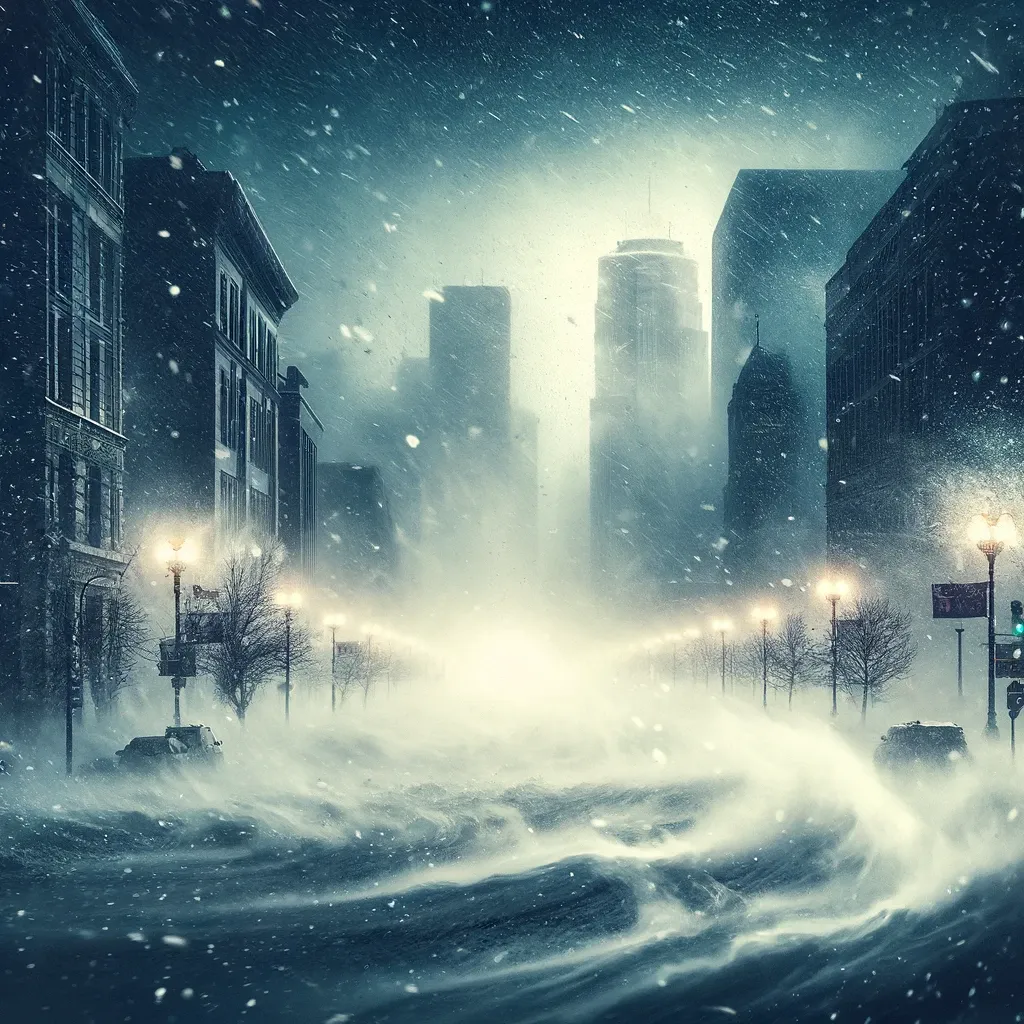More than a foot of snow and near-zero visibility are expected ahead of a major snowstorm in the central U.S.

Subheading:
The forecasting center at FOX reported that a powerful area of low pressure is rapidly intensifying, drawing moisture from the Pacific Ocean as well as cold air from Canada, which is causing snowfalls from the Rockies to the plains, as well as in the Midwest and the Great Lakes region.Subheading:
Winter weather warnings have been issued for the region from the Rockies to the Great Lakes, including a blizzard warning that will take effect on Sunday evening and last until Monday for the central and northern plains from Kansas to South Dakota, as well as in the ski center of Minnesota, north of Duluth.“Travel can be very difficult,” reported the weather service of the National Weather Service office in North Platte, Nebraska. “There is widespread blowing and drifting snow with nearly zero visibility. Gusty winds may knock down tree branches and power lines.”
Winter storm warnings are in effect for a large area, including North Dakota and Minneapolis in Minnesota. Weather warnings are also in place for the Upper Peninsula of New Mexico, covering the Rocky Mountains, southern Minnesota, and the Upper Peninsula of Michigan.
Subheading:
The forecasting center at FOX reported that the main snowfall will begin on Sunday and last until Sunday night, as snowfall increases across the region. Significant impacts on transportation accessibility are expected, especially in southern Minnesota and western Wisconsin. Problems are anticipated on highways, such as Interstate 80 through Nebraska, 90 in South Dakota, and even parts of Interstate 35 from Iowa to Minneapolis, as precipitation rates could reach 1-2 inches per hour with the possibility of thunderstorms.Important point:“However, there have been some changes in the forecast, especially regarding the important rain/snow line. The forecasting center at FOX reported that as the low pressure over the Rockies intensifies, it will be accompanied by a strong influx of moisture and warm air from the south, and this heat wave could push the rain/snow line much further north than previously expected. The latest computer models show that heavy rains could reach southern Minnesota and Wisconsin late Sunday night and into Monday morning.
In the Upper Midwest, from Dakota to Minnesota, many cities could receive between 12 to 18 inches of snow from this powerful storm. Minneapolis is expected to get around 5-8 inches of snow, while northern areas like St. Cloud may see between 8 to 12 inches. In the cities of Bemidji and Duluth in Minnesota, more than a foot of snowfall is anticipated.
Subheading:
However, what hasn't changed is the strong winds from the storm. The forecasting center at FOX reported that winds will reach gusts of 30 to 40 miles per hour, with possible stronger gusts up to 50 miles per hour across the region. This makes the situation dangerous, as blizzards could occur along the shores of Lake Superior in Minnesota and in the plains due to snow-driven clouds and whiteouts.Important point:"Travel should only be restricted in emergency situations," the National Weather Service reported. "If you must travel, don't forget your winter survival kit. In case of a delay, stay with your vehicle."
Comment
Popular Posts
Popular Offers

Subscribe to the newsletter from Hatamatata.com!
Subscribe to the newsletter from Hatamatata.com!
I agree to the processing of personal data and confidentiality rules of Hatamatata







